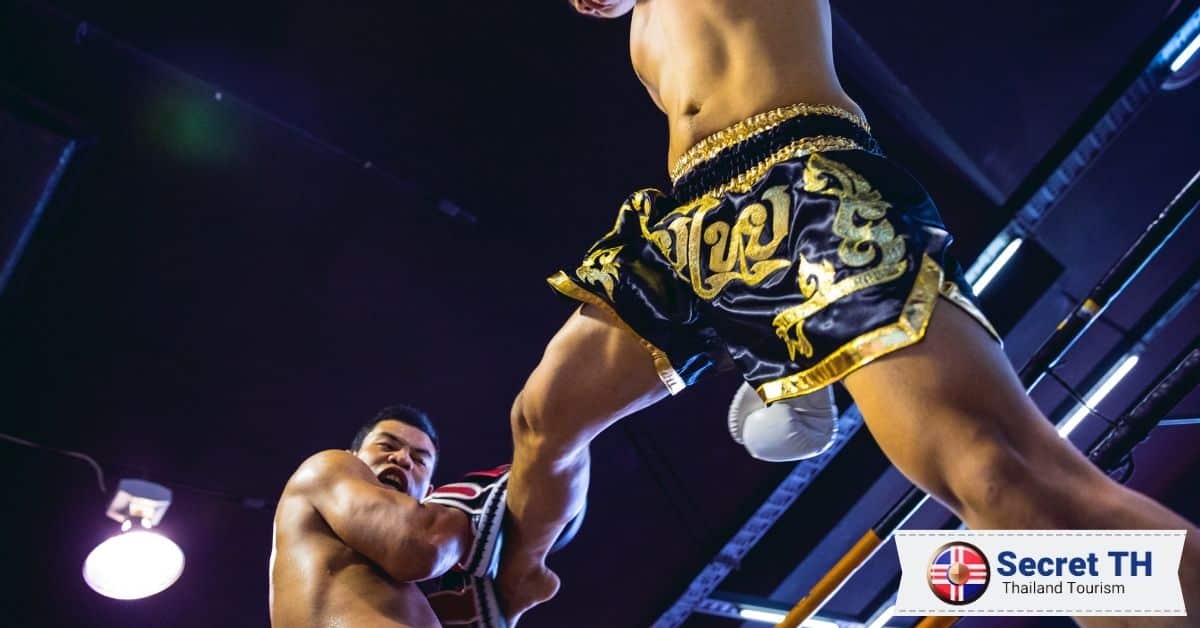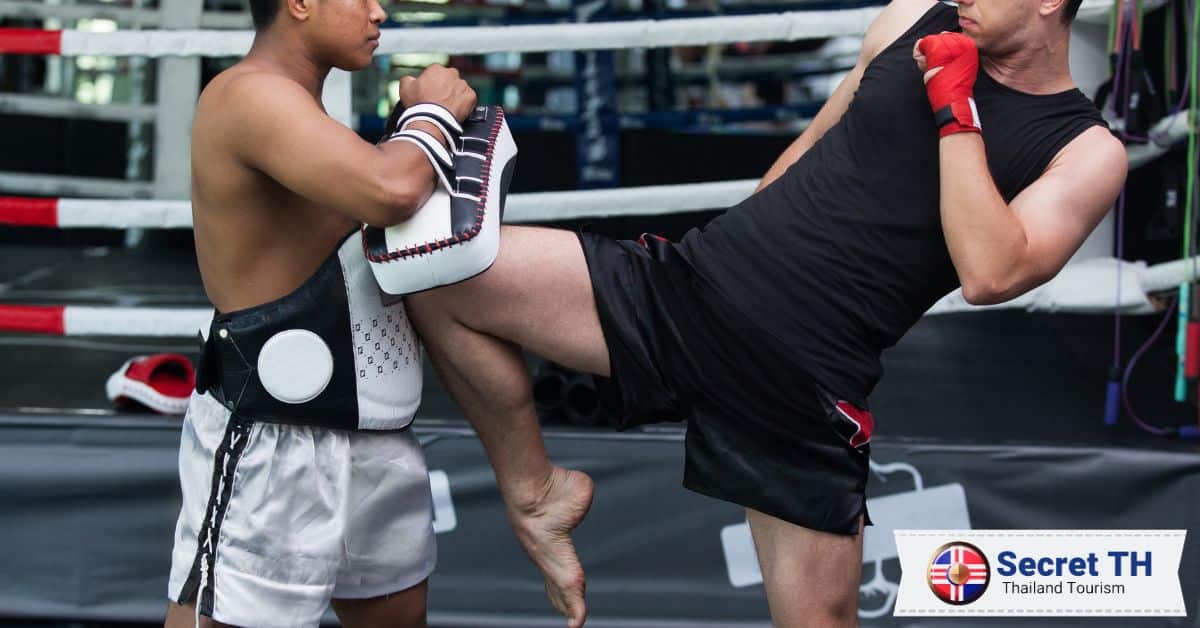Muay Thai, originating from Thailand, is a rigorous martial art that emphasizes strength, flexibility, and strategy. Known as the “Art of Eight Limbs”, it utilizes fists, elbows, knees, and shins for offensive and defensive techniques, making it a comprehensive full-body workout.
It’s not just about physical power – it’s about mental fortitude and strategic acumen. As you immerse yourself in the “Art of Eight Limbs”, you’ll learn to effectively use your fists, elbows, knees, and shins as tools of both offense and defense. Whether you’re looking to get in shape, build self-confidence, or take on a new hobby, this guide will help you understand the basics of Muay Thai, setting you on the path to mastery. Let’s get started!
History of Muay Thai
Muay Thai, also known as “The Art of Eight Limbs”, is a martial art and combat sport that originated in Thailand. For centuries, it has been a part of the country’s culture and history. The exact origin of Muay Thai is debatable, but it can be traced back to the middle of the 18th century, during the battles between the Burmese of the Konbaung Dynasty and the Ayutthaya Kingdom.
It began as a form of close-combat warfare that utilized the body’s natural ‘weapons’- the fists, elbows, knees, and shins. Over time, Muay Thai evolved and became a sport with rules. Today, the discipline enjoys global recognition, earning a reputation as one of the most physically demanding and strategic martial arts in existence.

Benefits of Practicing Muay Thai
Muay Thai is more than just a sport or a form of self-defense; it’s a pathway to enhanced physical and mental well-being. This martial art engages the entire body, demanding both physical exertion and mental focus, making it a holistic approach to wellness. Here are some of the significant benefits of practicing Muay Thai:

- Physical Fitness: Muay Thai provides a full-body workout, improving cardiovascular health, flexibility, strength, and coordination.
- Weight Loss: The intensive exercise involved in Muay Thai helps to burn calories and promote weight loss.
- Mental Health: Regular practice can improve focus, reduce stress, and promote emotional well-being.
- Self-Defense: Skills acquired in Muay Thai are practical and effective for self-defense.
- Discipline and Confidence: Training cultivates discipline and boosts confidence, fostering personal growth.
Basic Techniques and Terminology
Muay Thai, renowned as “The Art of Eight Limbs”, is a martial art form deeply rooted in Thai culture. With its origins, benefits, and basic techniques, it offers a comprehensive approach to physical and mental wellness. Its core techniques, each with unique terminology, are what define this martial art and make it distinct.
| Terminology | Description |
| Jab | A quick, straight punch thrown with the lead hand. |
| Cross | A powerful straight punch thrown with the rear hand. |
| Hook | A punch is performed by turning the core muscles and back, swinging the arm, which is bent at an angle, into the opponent. |
| Uppercut | A vertical rising punch is thrown with the rear hand. |
| Teep | A pushing kick, using the heel to strike. |
Training for Muay Thai
Muay Thai is a martial art deeply entrenched in the cultural fabric of Thailand. It intertwines physical prowess with mental agility, offering a holistic approach to wellness. Spanning from its historical origins to its contemporary global recognition, this combat sport provides a myriad of benefits, ranging from improved physical fitness and weight loss to mental health and self-defense. This document elucidates the vast and enriching realm of Muay Thai, highlighting its benefits, foundational techniques, and the disciplined training it requires.

Finding a reputable gym or instructor
Before beginning Muay Thai training, it’s essential to find a reputable gym or instructor. Look for recommendations from friends or online reviews and ensure that the gym/instructor is certified and experienced. A good gym/instructor will be able to provide guidance on proper form and technique, create personalized training plans, and motivate you along your journey.
Basic Training Routine
A basic Muay Thai training routine may include:

- Warm-up: A light jog or skipping to increase heart rate and blood flow.
- Shadowboxing: Practice the basic techniques, including footwork, punches, kicks, and blocks.
- Bag work: Use a punching bag to practice power, speed, and accuracy with strikes.
- Pad work: Work with a partner, using pads to practice coordination and power.
- Sparring: Controlled fighting with a partner to apply techniques in a realistic setting.
- Cool-down: Stretching exercises to improve flexibility and prevent injury.
Importance of proper warm-up and stretching
Proper warm-up and stretching are crucial for injury prevention and optimal performance. Muay Thai is a physically demanding sport, and without proper preparation, it can lead to strains or sprains. Warming up increases blood flow to the muscles, preparing them for intense activity. Stretching helps improve flexibility, which is essential for executing techniques correctly and reducing the risk of injury.
Safety Tips and Equipment
Practicing Muay Thai involves inherent risks, as it is a contact sport. However, the correct application of safety measures and the use of appropriate equipment can significantly reduce the risk of injury. Safety gear for Muay Thai includes gloves, mouthguards, shin guards, and headgear.

- Gloves: Muay Thai gloves are designed to protect both the wearer and the opponent from injury. The gloves are padded, reducing the impact of punches.
- Mouthguards: A mouthguard is essential for protecting your teeth during sparring sessions. They cushion blows that might otherwise cause broken teeth or injuries to the lips, tongue, face, or jaw.
- Shinguards: Shinguards are designed to protect the shin and foot during training, especially during kicking and blocking drills.
- Headgear: While not always used in training, headgear can provide additional protection during intensive sparring sessions, reducing the risk of head injuries.
Safety extends beyond wearing the right gear. It involves adhering to the right techniques, respecting your training partners, and listening to your body’s signals. If something doesn’t feel right, it’s crucial to stop and seek professional advice. Always remember, the objective of training in Muay Thai is not just about building strength or learning to fight, it’s about holistic wellness and personal growth.

Conclusion
Muay Thai’s rich history, holistic benefits, and the discipline it fosters make it a powerful path to personal growth and wellness. With the right guidance, training regimen, and safety measures, this martial art offers much more than self-defense capabilities. It presents a way of life that improves physical health and enhances mental well-being.
It also cultivates an enduring sense of personal accomplishment. Whether you’re seeking a new fitness challenge or a profound journey toward self-discovery. Muay Thai provides the tools to guide you on your journey.













